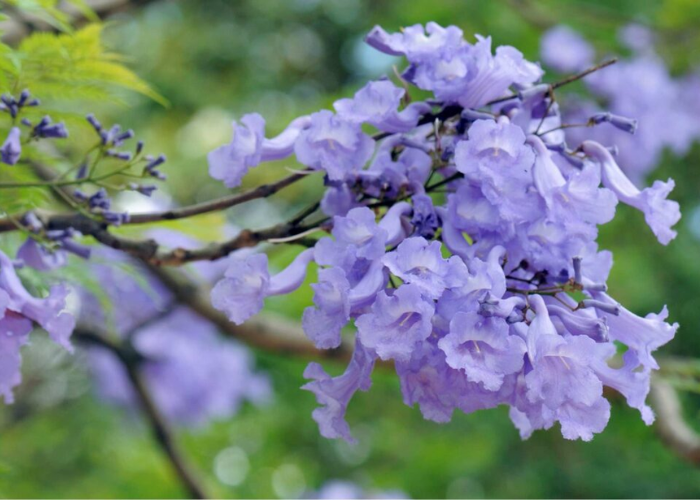Fern like leaves on a tree make for an interesting sight. With their delicate fronds and intricate shapes, these plants add character and texture to any outdoor space. But what are these plants? What benefits do they bring to a yard or garden? And how are they cared for? In this blog, we will explore the world of fern-like leaves on a tree and the many advantages they can offer.
Definition of Ferns
Ferns are a type of plant that is known for its frond-like leaves. These leaves can be divided into two categories: sterile and fertile. Sterile fronds are the leaves that grow at the top of the plant and are generally flat and feathery in appearance.
Fertile fronds, on the other hand, are located lower on the plant and have a more twisted, curled appearance. The leaves of ferns have a distinct shape, which makes them easy to identify. They are usually dark green, but some species have variegated or golden-colored leaves.
Ferns prefer shady, moist environments and many species can be found growing in wooded areas. Ferns reproduce asexually, meaning they produce spores to spread their progeny. They are an important part of the ecosystem, providing food and shelter for many different animals.
Leaf Structure
Fern-like leaves on a tree are incredibly complex structures that often appear delicate. These leaves are composed of several layers, each with its own unique purpose.
At the base is a protective waxy cuticle that prevents water loss, and beneath that are the spongy mesophyll cells which are responsible for absorbing carbon dioxide and releasing oxygen.
These cells are also important for the conversion of light into chemical energy. The veins of the leaf are composed of xylem and phloem, which transport the water and nutrients that the tree needs to function.
The veins also provide the leaf with structural support, helping it to remain upright and strong. Finally, the upper surface of the leaf is covered with a layer of stomata, which allows the tree to breathe and exchange gases with the environment.
All of these components come together to create the beautiful, intricate structure of a fern-like leaf.
Different Varieties
Fern like leaves on a tree are a beautiful sight to behold and can come in a variety of shapes and sizes. There are many different varieties of these fern-like leaves, each with its own unique characteristics and beauty.
The most common varieties are the Bird’s Foot Fern, the Maiden Hair Fern, and the Japanese Sago Palm. The Bird’s Foot Fern is a clumping species with delicate, feathery fronds that look like a bird’s feet. This variety is usually found in tropical and subtropical climates.
The Maiden Hair Fern has fronds that are very thin and delicate, resembling hair. They are often used in landscaping and are available in many different colors. The Japanese Sago Palm is a unique species that grows in a fan-like shape and has very distinctive, dense, long, and thin fronds.
These plants are often used as ornamental features in gardens and landscapes. All three of these varieties are beautiful and can bring a unique look to any garden or landscape.
Tree Varieties Which Support Ferns
Tree varieties that support ferns can be found in a variety of different species. Many trees such as oak, maple, and elm have a higher tolerance for ferns than other trees like pine or larch. The leaves of these trees are often fern-like, with their curling lobes and long, feathery fronds.
Ferns love the dappled light and protection offered by the canopy of these trees, allowing them to thrive. The bark of these trees is also thick enough to provide protection from the elements, ensuring the ferns stay healthy.
These trees are also known for their nutrient-rich soil, which helps to nourish the ferns and keep them thriving. Ferns are often found on branches of trees, clinging to the bark and stems and creating a unique vertical landscape.
Ferns can also be found growing in the crevices of the bark, which provides them with shelter and a comfortable environment to thrive.
Benefits of Fern Leaves on Trees
Fern-like leaves on a tree can provide numerous benefits to both the environment and the tree itself. In addition to being aesthetically pleasing, these unique leaves also provide natural shade, help reduce wind damage, and can even help to conserve water.
By providing natural shade, fern-like leaves on a tree can help to reduce the amount of direct sunlight that the tree is exposed to, which can help to reduce stress and damage caused by too much sunlight. Additionally, these leaves can also help to reduce wind damage, as their shape is better able to deflect wind compared to more traditional leaves.
Finally, fern-like leaves on a tree can help to conserve water, as they are able to store more water than other leaf types, providing an efficient way to conserve water.
All in all, fern-like leaves on a tree can provide a wide range of benefits to the environment and the tree itself, making them an ideal choice for many landscaping applications.
How to Care for Fern Leaves on Trees
Fern leaves on trees can add a unique texture and visual interest to any outdoor landscape. When cared for properly, these delicate leaves can add a beautiful, lush look to your yard. To keep your fern leaves healthy and thriving, you should keep them in a sunny spot and water them regularly. Make sure to avoid over-watering and keep the soil well-drained.
You should also trim off any dead or damaged leaves for a more aesthetically pleasing look. Additionally, you should use a fertilizer specifically designed for ferns to help promote growth and keep the leaves healthy. With the right care, your fern leaves will remain beautiful and lush year-round.


